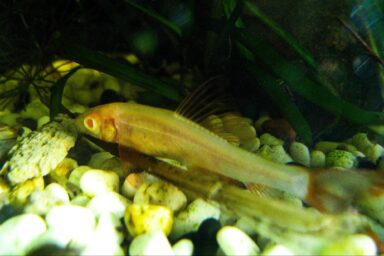It’s Time to Consider a Patent Reprieve for COVID Vaccines ; Colombia’s Cartels Target Europe ; and More Picks 4/15
It’s Time to Consider a Patent Reprieve for COVID Vaccines (DonkeyHotey)
The author writes, “The world needs around 11 billion doses of coronavirus vaccine to immunize 70% of the world’s population, assuming two doses per person. … Poorer nations — which account for 80% of the world’s population — so far have access to less than one-third of the available vaccines. One reason for this imbalance is that wealthier countries have been able to place substantial advance orders with the relatively small group of companies that are making vaccines, most of which are based in richer countries. Unless manufacturing and supply can be distributed more evenly, researchers forecast that it will be at least another two years before a significant proportion of people in the lowest-income countries are vaccinated. This is why around 100 countries, led by India and South Africa, are asking fellow World Trade Organization members to agree a time-limited lifting of COVID-19-related intellectual-property (IP) rights.”
Cops for $100 a Day: How Seattle Spends Millions Hiring Off-Duty Police Officers but Does Little to Monitor Their Moonlighting (Reader Steve)
From the Seattle Times: “Among police departments, Seattle pays the highest wages in Washington state. But within city government, the electric utility pays even more for their services. Seattle City Light pays $90 an hour for cops to direct traffic, a rate earned by only the top 2% of the Seattle Police Department’s payroll. On Sundays and holidays, when City Light pays $139 an hour, not even the interim police chief earns more. But City Light is not paying the officers directly. It is hiring them off-duty through Seattle’s Finest Security and Traffic Control LLC, a for-profit firm that has collected $13.7 million from the utility over the past decade. It isn’t clear how much Seattle’s Finest pays officers but it is likely a premium over SPD, where most officers make less than $60 an hour.”
Colombia’s Cartels Target Europe With Cocaine, Corruption, and Torture (Russ)
The author writes, “At 5am on a chilly Tuesday morning last month, 1,600 police officers and balaclava-wearing special forces, bristling with arms and battering rams, were ordered into action around the Belgian port city of Antwerp. More than 200 addresses were raided in what was the largest police operation ever conducted in the country and potentially one of the most significant moves yet against the increasingly powerful narco-gangs of western Europe. There are hopes that Operation Sky will herald the downfall of a generation of local bosses, although the Belgian and Dutch ‘godfathers’ largely now hide out in Dubai and Turkey, hoping to be out of reach of the authorities.”
Major Afforestation Project Inaugurated in Tehran (Mili)
From the Tehran Times: “The development of afforestation around [Tehran, Iran] (in the form of a green belt) aims to prevent the uncontrolled development of suburban construction, create beautiful areas, clean the air and improve the conditions of the urban environment. The predominant plant species planted are selected from native species resistant and adapted to climatic conditions, including common ash, Judas tree, locusts, hawthorn, honeyberry, almond, Tehran pine, oak, and juniper.”
A Clash of Wills Keeps a Leonardo Masterpiece Hidden (Dana)
The authors write, “French curators had worked for a decade to prepare a major exhibition marking the 500th anniversary of the death of Leonardo da Vinci. When it opened, though, the most talked-about painting they had planned to show — ‘Salvator Mundi,’ the most expensive work ever sold at auction — was nowhere to be seen. Plucked from shabby obscurity at a New Orleans estate sale, the painting had been sold in 2017 as a rediscovered ‘lost’ Leonardo and fetched more than $450 million from an anonymous bidder who kept it hidden from view. The chance to see it at the Louvre museum’s anniversary show two years later had created a sensation in the international art world, and its absence whipped up a storm of new questions.”



